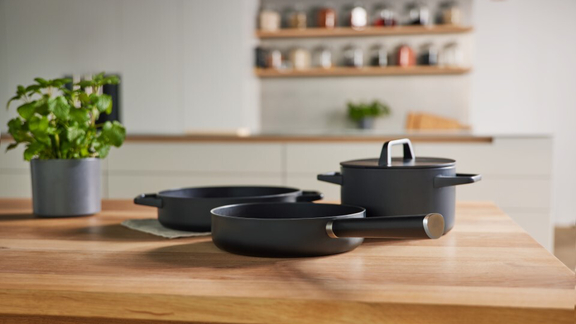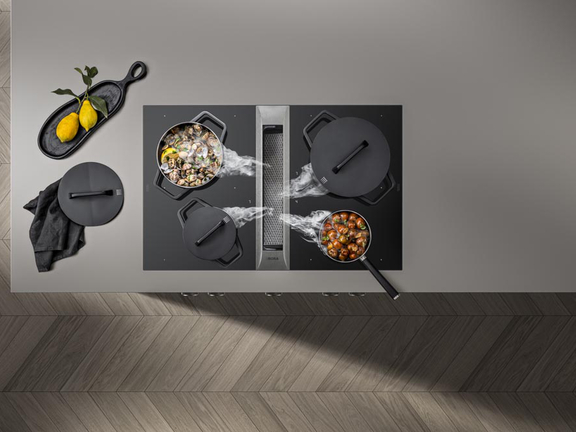

Choosing the right material for cookware is crucial for the cooking experience and the longevity of the cookware.
Which material is best? What are the advantages and disadvantages of different materials? What actually makes a good pot or a high-quality pan? Our guide will help you find the right cookware for your needs.
The material of a saucepan not only influences the cooking performance, but also the care and durability. High-quality materials ensure even heat distribution, are durable and make cleaning easier.

A carefully selected set of pots and pans that is tailored to the different needs of everyday cooking can make all the difference in the kitchen. It's not just about having the right pot or pan for each cooking method, but also about how the material interacts with the ingredients. The right choice of materials can help to ensure that food not only tastes better, but also remains more nutritious. It is crucial that the material suits your cooking style and the type of hob you use.
| Material | Advantage | Disadvantage |
|---|---|---|
| Stainless steel |
|
|
| Cast iron |
|
|
| Comparatively heavy material |
|
|
| Suitable for all hob types (with magnetic base also induction-compatible) |
|
|
| Can be used excellently on gas and electric hobs |
|
|
* To prevent discolouration and changes in taste, copper cookware is coated with a protective layer of stainless steel or tin, which serves as a non-stick coating. The non-stick coating on aluminium cookware usually consists of a heat-resistant ceramic coating or a PTFE coating (polytetrafluoroethylene), also known under the brand name Teflon.
Multi-ply pans are an innovative development in the world of cookware as they combine the strengths of different materials in a single product. This concept, also known as ‘clad cookware’, uses a combination of layers, typically metals such as stainless steel and aluminium or copper, to maximise the benefits of these materials. The outer layers of stainless steel offer durability and a strong surface while the inner layers provide optimum heat storage and distribution.
Tip: products made of 5-ply stainless steel like BORA Pots and Pans bring the cooking experience to a whole new level and are ideal for ambitious chefs who value quality and performance. The 5-ply structure of the pot or pan, comprising two layers of stainless steel and three layers of aluminium, combines the best properties of both materials to optimise the cookware’s durability, efficiency and thermal conductivity, and thereby shorten the heat-up time, for example.

Discover the top-quality BORA cookware set, perfectly designed for your kitchen.
A high-quality saucepan is characterised by the following features:
Plastic handles are preferred as they are heat-insulating and do not get hot. They ensure safe handling, especially at high temperatures. However, plastic handles are not suitable for use in the oven.
The choice between stainless steel and cast iron depends on your cooking habits:
New pots should be cleaned thoroughly before first use. Remove production residues with warm water and mild detergent. Non-stick models should be lightly oiled before first use to protect the coating.